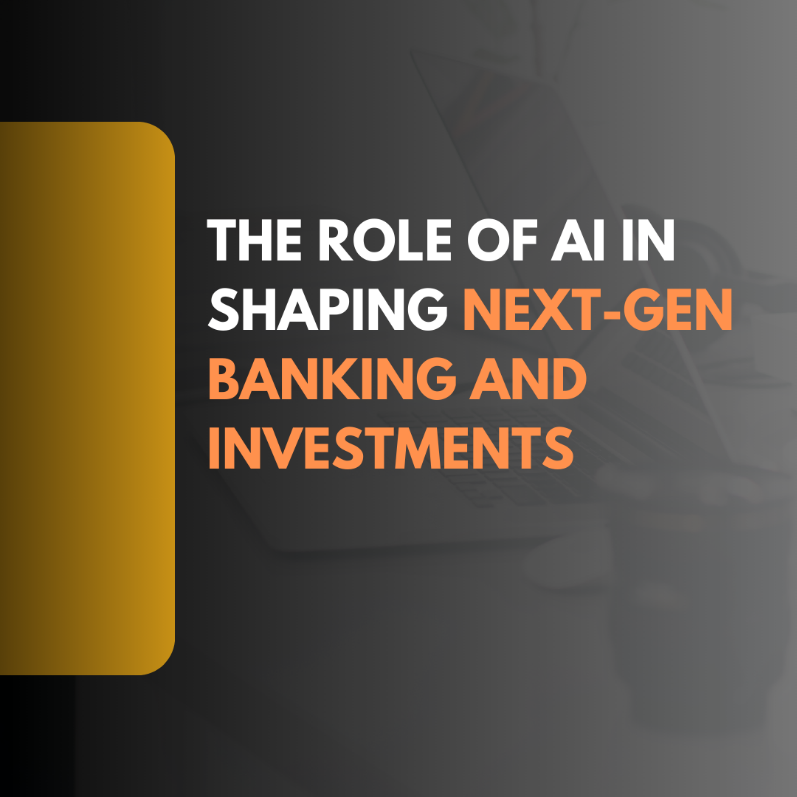Financer, Learning, Technology
The Role of AI in Shaping Next-Gen Banking and Investments
- By phelixad
- No Comments
11 Mar

|
Getting your Trinity Audio player ready...
|
The financial industry is about to go through a huge technological change. Artificial Intelligence (AI) will have a big impact on the future of banks and investing. To get to next-generation banking, we need to do more than just automate tasks and make operations more efficient. We need to change the very nature of financial services and customer experiences.
Let’s dig deeper into this blog post to understand how AI has a profound impact on the financial sector.
Table of Contents
Personalized Banking Experiences
One of the most important ways AI is changing banks is by making the experience of each customer unique. AI systems are now being used by banks to look at huge amounts of data about their customers’ habits, preferences, and financial past. This lets them give each customer personalized financial help, custom ways to save and spend money, and even predictive banking services that know what a customer will need before they do. Imagine opening your banking app and getting an idea for a savings plan that works perfectly with how you spend money and your financial goals. That’s how AI works.
JPMorgan Chase has used an AI tool called COIN (Contract Intelligence) to look at legal papers and pull out key terms and data points. This not only speeds up the review of documents but also lets the bank give more personalized advice to its customers by analysing data to learn more about their needs.
Enhanced Customer Service with AI
Thanks to AI-powered tools like robots and virtual helpers, the days of waiting in long lines to get help with your banking are coming to an end. These AI tools are available 24 hours a day, seven days a week, and can help with customer questions, transactions, and even hard jobs like finding scams right away. Because they can handle natural language, these virtual agents can understand and answer customer questions with the accuracy of a person. This makes digital banking easier to use and more convenient.
Bank of America presented Erica, a virtual helper who helps more than 65 million clients with their money. Erica uses predictive analytics and natural language processing to help clients.
Erica can
- answer questions about transactions,
- give information on credit reports,
- and give personalized tips on how to save money.
This shows how AI can improve real-time customer service.
Fraud Detection and Risk Management
AI is very good at finding trends and outliers in large amounts of data, which makes it very useful for finding scams and controlling risk. AI systems can spot strange actions that are different from a customer’s normal behaviour by looking at transaction data in real time. This can alert authorities to possible theft so it can be investigated immediately. Also, AI’s prediction analytics can very accurately figure out how risky loans and investments are, which helps banks make better choices and lower their possible losses.
HSBC teamed up with AI company Ayasdi to improve its efforts to stop money laundering and find scams. HSBC can find shady activities more accurately by using machine learning to look at huge amounts of transaction data. This cuts down on the number of false alarms and makes its fraud detection processes more effective.
Revolutionizing Investments with Robo-Advisors
With the rise of robo-advisors, the way people spend is changing in a big way. These systems that AI backs offer automatic, algorithm-driven financial planning services that don’t need much help from humans. They give you personalized financial tips, make changes to your accounts automatically based on how the market is doing, and make trades at the best times. For investors, this means having access to complex investment techniques previously only available to very wealthy people. This makes investment possibilities more open to a wider range of people.
Robo-advisors like Betterment and Wealthfront are great examples of how AI is making it easier for people to get financial help. These platforms use algorithms to handle assets based on the user’s risk tolerance and financial goals. The algorithms automatically rebalance and optimize investments for tax efficiency, showing how AI can make investment management more accessible to everyone.
The Future of Banking and Investments
In the future, when AI is used in banks and investing, it could lead to even more groundbreaking ideas. The options are endless. Blockchain-enhanced AI could make trades safer and more open. AI-driven prediction banking could be able to predict and handle future financial problems. But as we welcome these changes, it’s important to deal with problems like data safety, the digital gap, and the right way to use AI. Only then can we make sure that the future of banking is safe, open, and helpful for everyone?
Ant Financial’s MYbank lends money to small and micro-businesses without collateral. It shows what AI could be used for in the future in banking. By looking at real-time transactions and other types of data, MYbank can quickly decide if someone is creditworthy and give them a loan without any help from a person. This example shows how AI could be used to provide financial services to groups that aren’t currently getting them, showing a future where banking is more open and easier for everyone.
Bottom Line
The future of banks and investing is not just being shaped by AI; it is being redefined. AI is making the financial sector more available, efficient, and safe by personalizing customer experiences, improving service efficiency, finding scams and managing risk better, and changing the way investments are made. Companies that offer AI development services can lead the way to a better future in banks and investments. This will help them adapt to the evolving trends and make the most of these technological advances.


